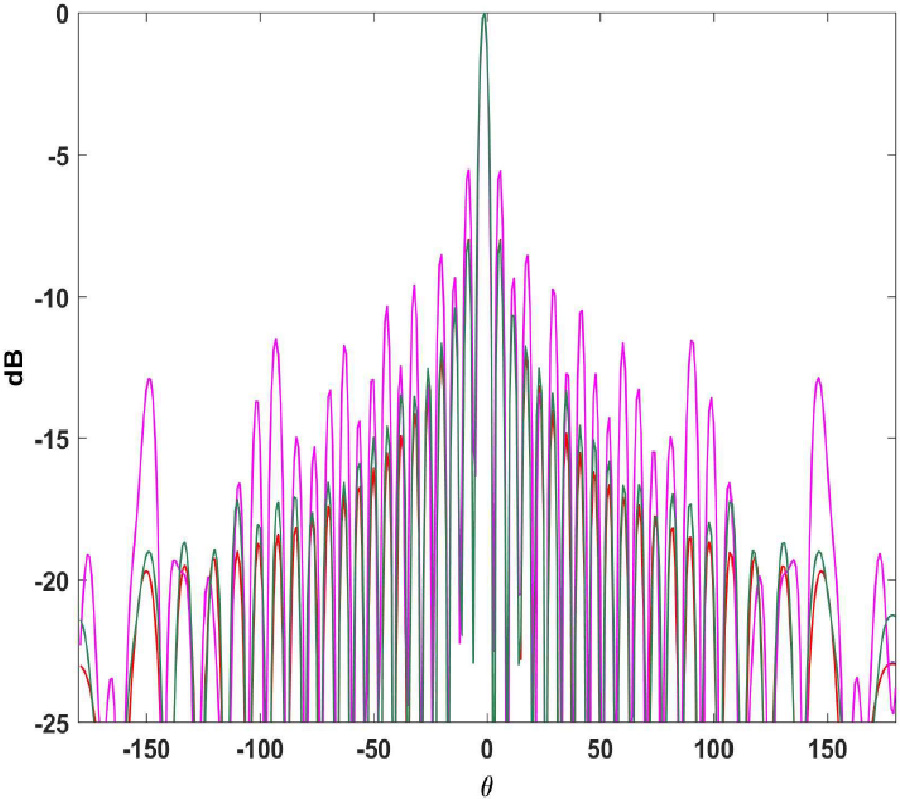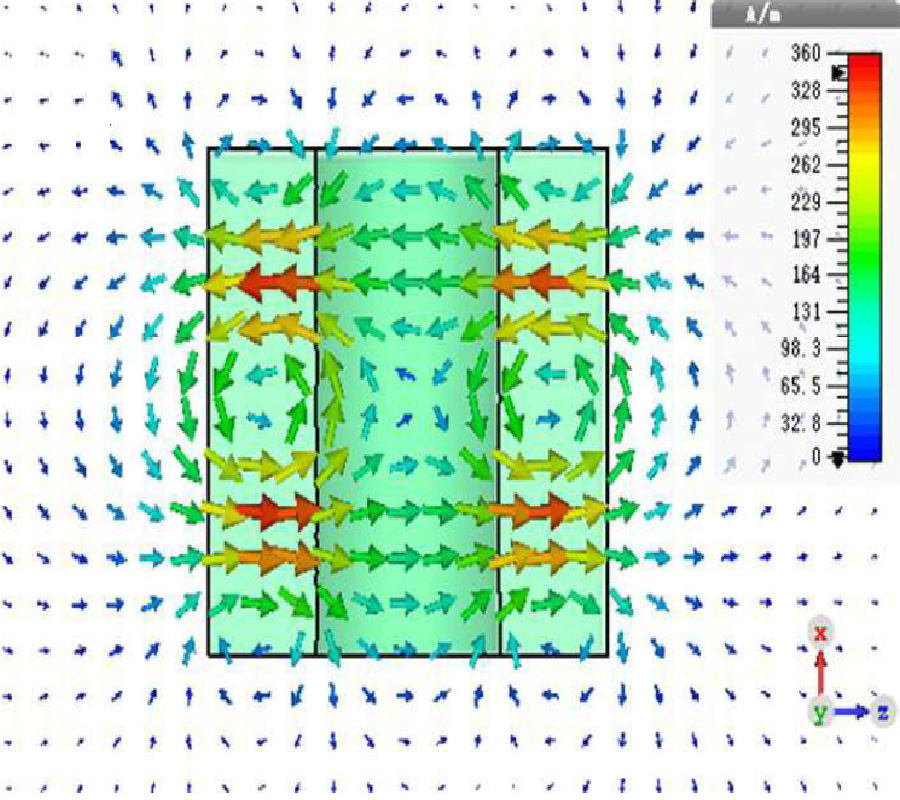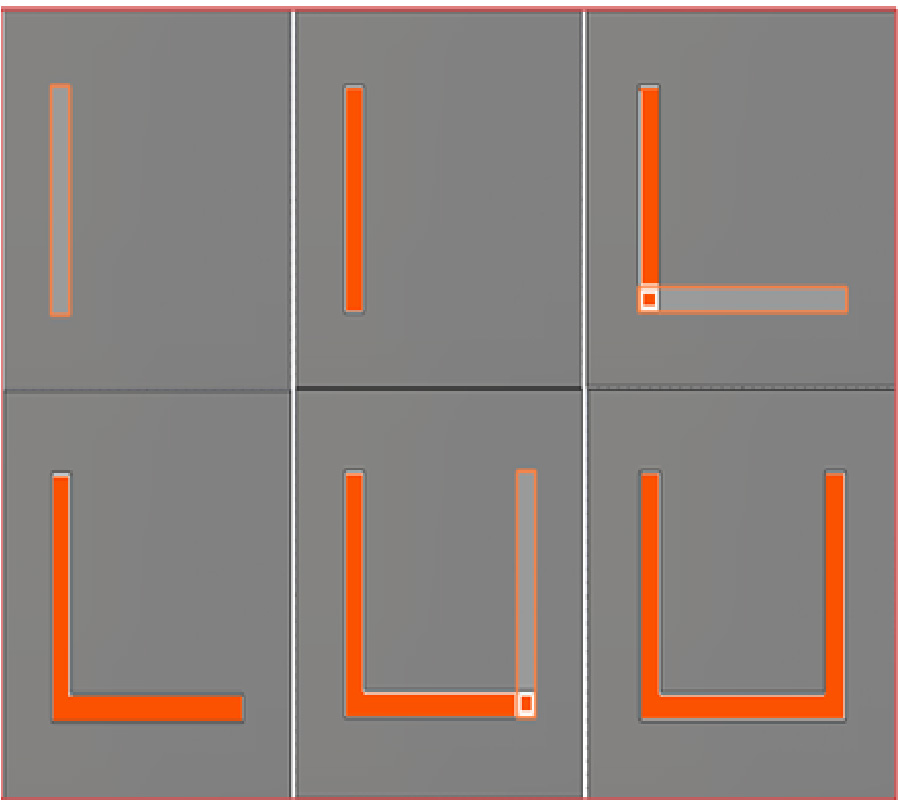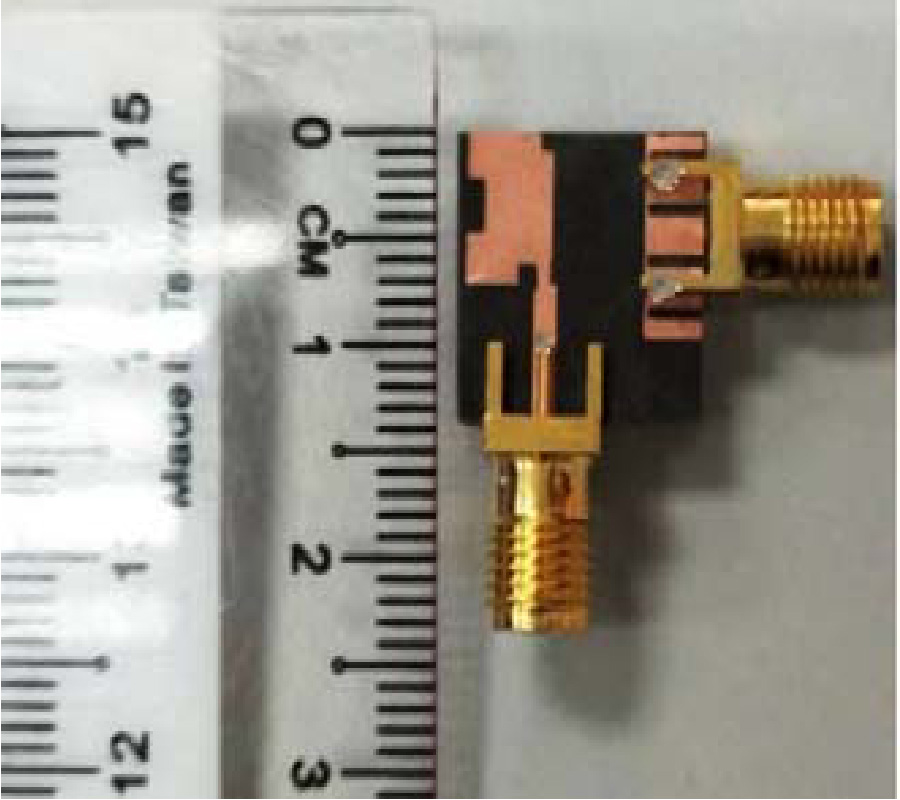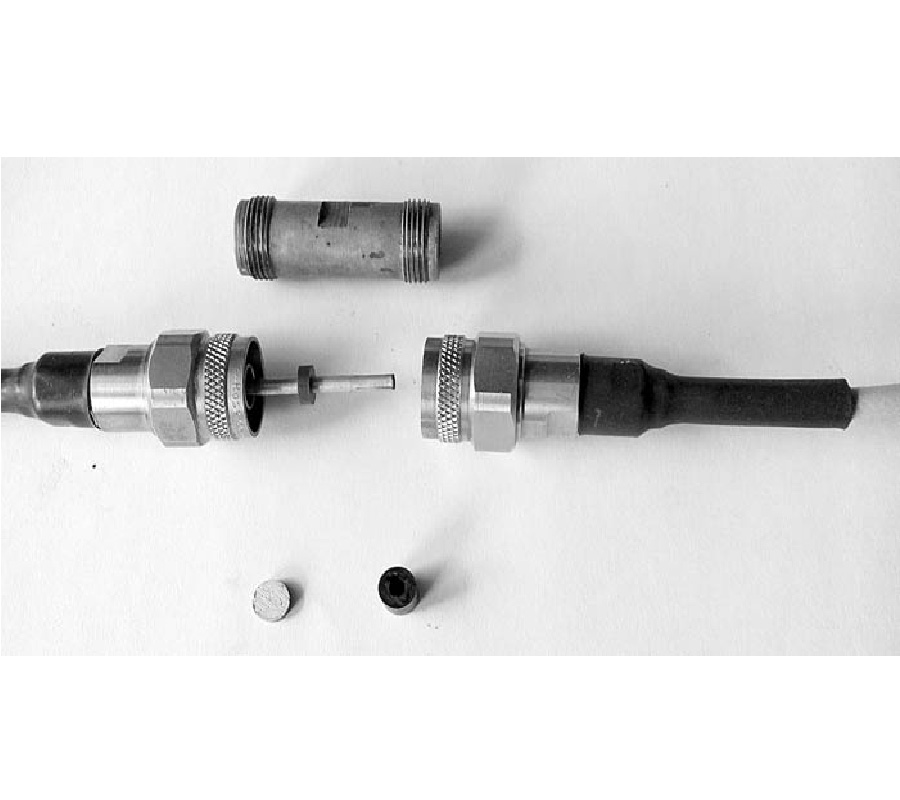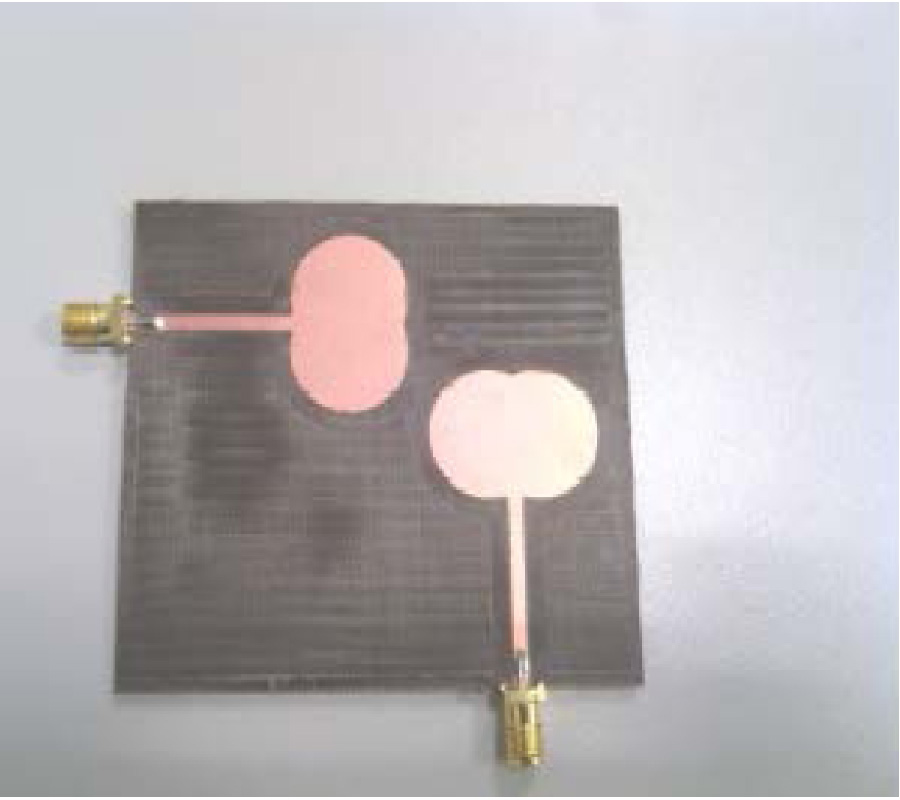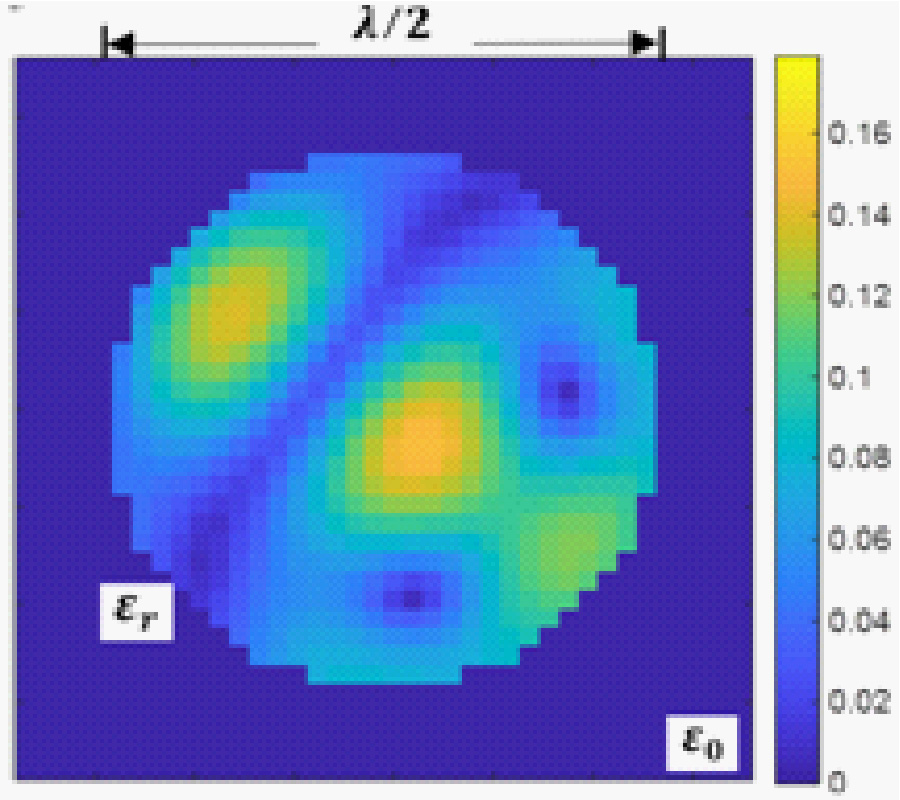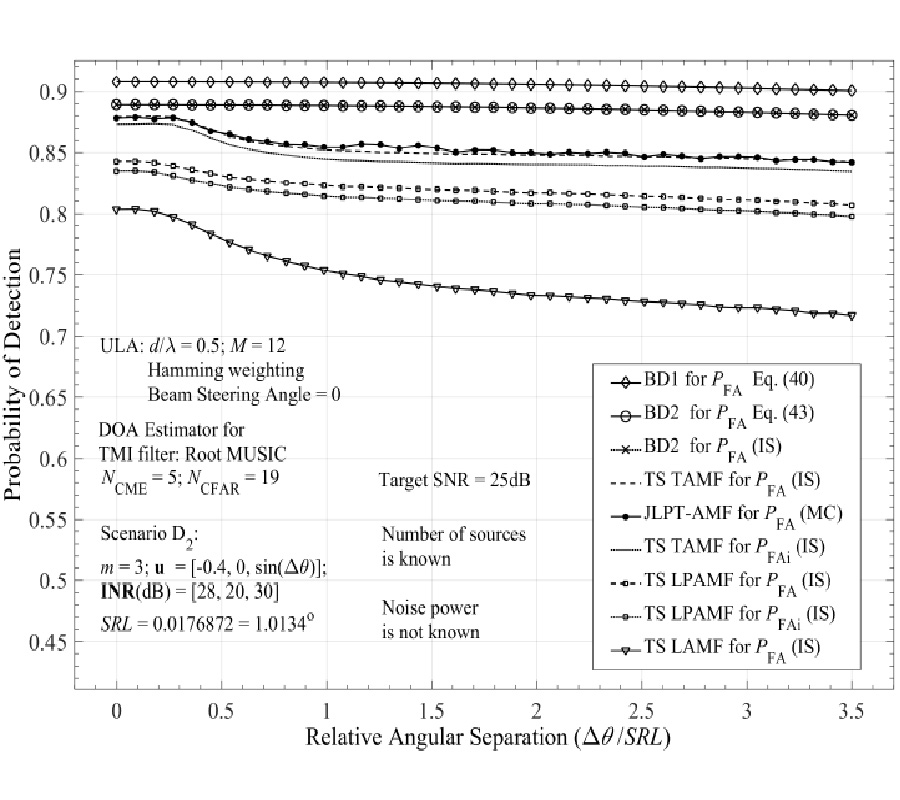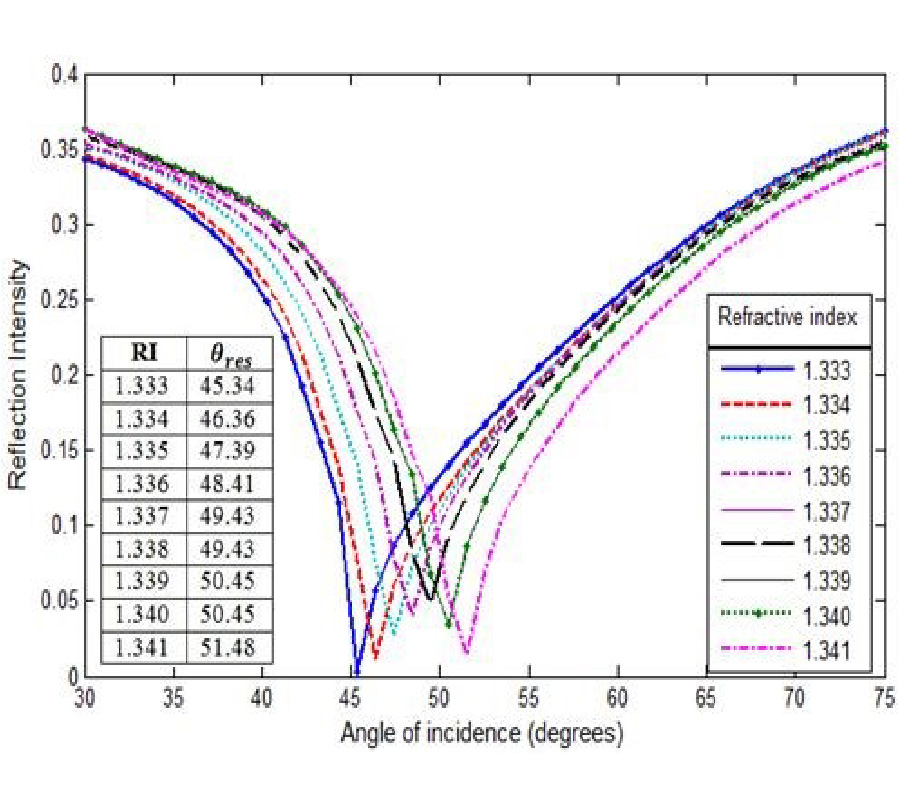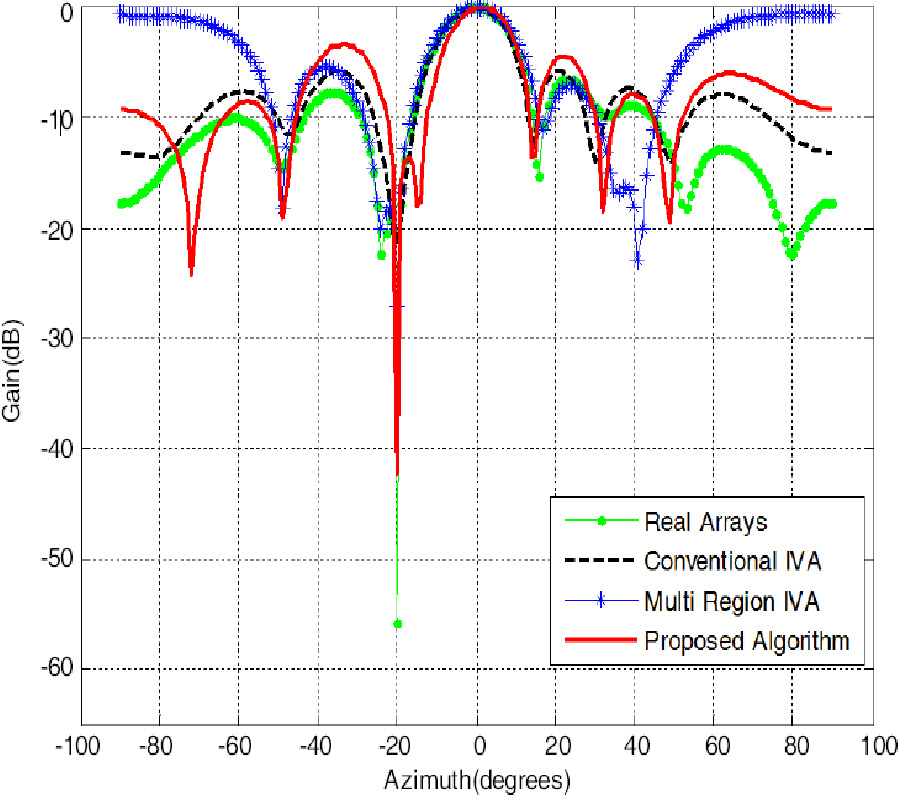Rapidly Adaptive CFAR Detection in Antenna Arrays
Anatolii A. Kononov
This paper addresses the problem of target detection in adaptive arrays in situations where only a small number of training samples is available. Within the framework of two-stage adaptive detection paradigm, the paper proposes a class of rapidly adaptive CFAR (Constant False Alarm Rate) detection algorithms, which are referred to as joint loaded persymmetric-Toeplitz adaptive matched filter (JLPT-AMF) detectors. A JLPT-AMF detector combines, using a joint detection rule, individual scalar CFAR decisions from two rapidly adaptive two-stage (TS) detectors: a TS TAMF detector and a TS LPAMF detector. The former is based on a TMI filter, which is an adaptive array filter employing a Toeplitz covariance matrix (CM) estimate inversion. The latter is based on an adaptive LPMI filter that uses diagonally loaded persymmetric CM estimate inversion. The proposed class of adaptive detectors may incorporate any rapidly adaptive TS TAMF and TS LPAMF detectors, which, in turn, may employ any scalar CFAR detection algorithms that satisfy an earlier derived linearity condition. The two-stage adaptive processing structure of the JLPT-AMF detectors ensures the CFAR property independently of the antenna array dimension M, the interference CM, and the number of training samples NCME to be used for estimating this CM. Moreover, the rapidly adaptive JLPT-AMF detectors exhibit highly reliable detection performances, which are robust to the angular separation between the sources, even when NCME is about m/2 ~ m, m is the number of interference sources. The robustness is analytically proven and verified with statistical simulations. For several representative scenarios when the interference CM has m dominant eigenvalues, comparative performance analysis for the proposed rapidly adaptive detectors is provided using Monte-Carlo simulations.
